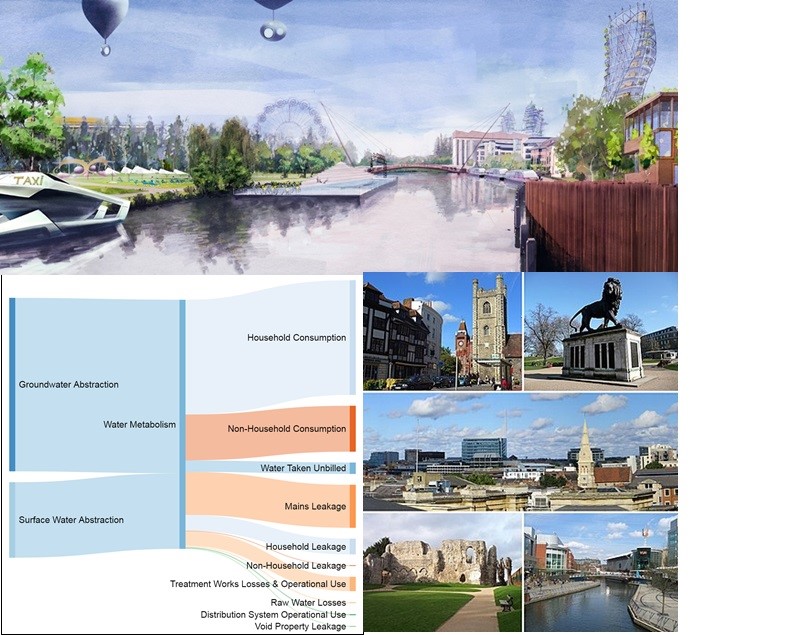What will Reading look like in 30 years‘ time? How can we ensure there will be jobs, living spaces and facilities that we can enjoy in a sustainable way? The Reading 2050 project, including Professor Tim Dixon from the School of the Built Environment, has led development of a vision for Reading 2050 in consultation with local communities, organisations and businesses. Tim is hosting a series of public lectures to encourage debate on delivering the vision. On 28 June, he will welcome Natalie Ganpatsingh, from Reading-based Nature Nurture and on 18 July, Dr Eugene Mohareb and Dr Daniela Perrotti from the School of the Built Environment, University of Reading will be speaking. Tim explains more.
The Reading 2050 project was established in 2013 to deliver a strategic, long-term vision that will support growth and prosperity, and help ensure that a truly smart and sustainable city can be delivered by 2050. The project was ‘co-created’ as a partnership between the University of Reading (School of the Built Environment), a planning and design consultancy Barton Willmore, and Reading UK.
The vision was developed through a series of workshops and activities with a wide range of organisations and residents from across Reading and the Thames Valley region and was launched in October 2017. It has been cited in the Government Office of Science Future of Cities Foresight Programme and final report (2014-16) and directly supports Reading Borough Council’s statutory Local Plan and Corporate Plan. The project was also recently shortlisted for an award in the University of Reading’s Research Engagement and Impact Awards 2018.
To further develop the vision, and to provide a platform for debate and discussion, we are holding a continuing series of public lectures focused on three important elements in the vision: Place and Environment; People and Lifestyle; and Economy and Employment. Two forthcoming lectures this term take a more detailed look at important environmental challenges for Reading – now and in the future.
On 28 June, Natalie Ganpatsingh, from Reading-based organisation Nature Nurture, looks at Nature and People in our Urban Future. Nature Nurture specialises in connecting our urban communities with the nature on their doorstep. Natalie, its founder, believes that connection with the natural environment is vital to our health and wellbeing. She believes that despite population rise and urban growth, we can design nature-friendly cities and integrate a connection with nature into our lives.
On 18 July, Dr Eugene Mohareb and Dr Daniela Perrotti from Reading’s School of the Built Environment will give a lecture examining The Urban Metabolism of Reading. The presentation will introduce the concept of ‘urban metabolism’ – a modelling approach used to describe and analyse the flows of the materials and energy within cities – and will explore what drives urban demand for resources such as energy, water, material and food. It will also offer new insights into the results of a University research project looking at demand and consumption of resources in Reading in order to analyse fuel poverty.
Both lectures start at 6pm and will held at the London Road Campus (Room GO1, Building LO22) followed by a Q&A session. For further details on the full lecture series visit: www.reading.ac.uk/architecture/architecture-public-lectures

